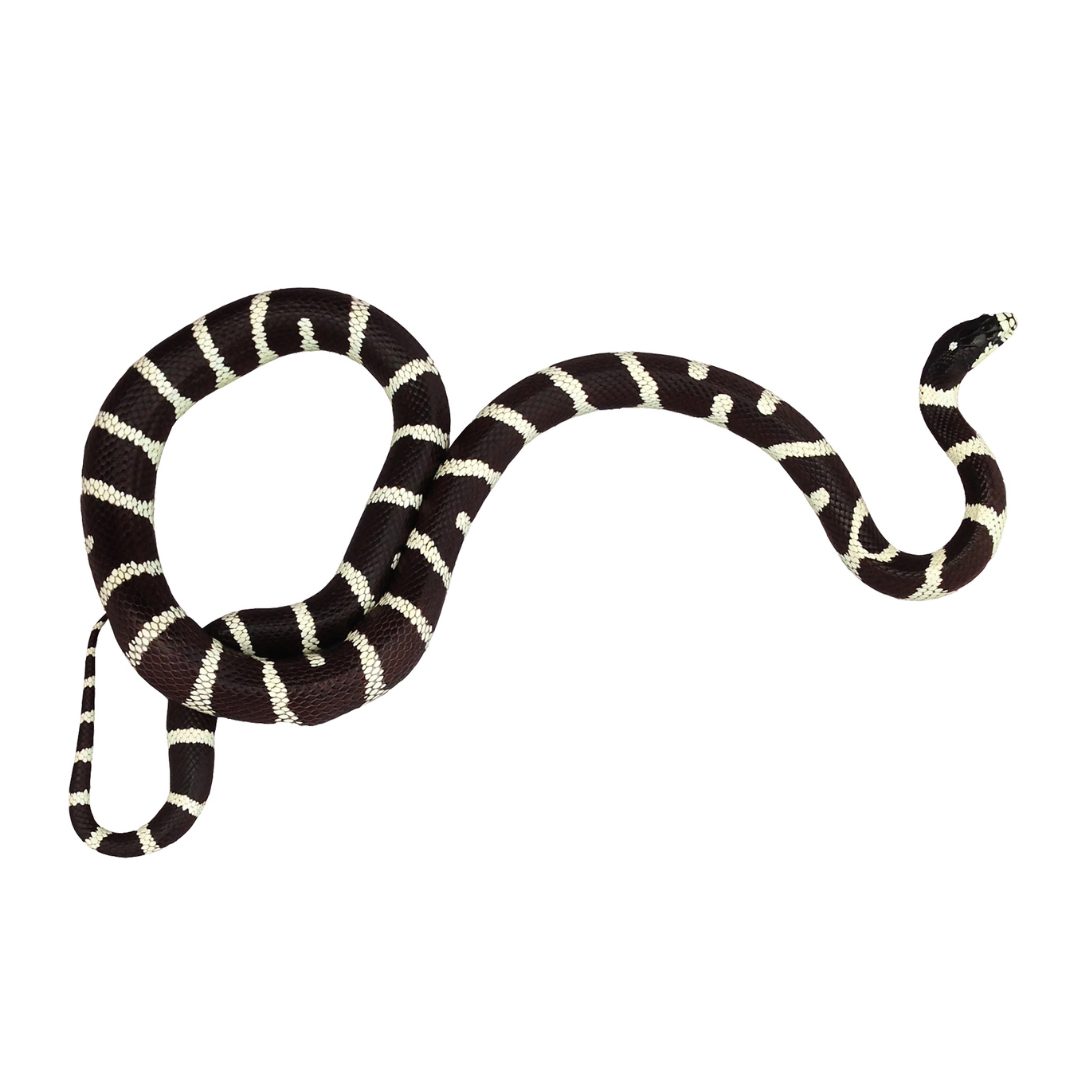King snakes are popular pet snakes that are known for their striking colors and patterns, as well as their docile and curious nature. Here are some general recommendations and guidelines for the care and maintenance of pet king snakes.
Housing:
King snakes should be housed in a secure enclosure that is appropriate for their size. The enclosure should have a secure lid to prevent escape, and should be well-ventilated. A heat source should be provided to maintain a temperature range suitable for the particular species of king snake, which may vary from 75-85°F up to 90-95°F. A hiding area, such as a cave or box, should be provided to allow the snake to retreat and feel secure. The enclosure should be kept clean and disinfected regularly.
Feeding:
King snakes are carnivores and require a diet of live or pre-killed prey appropriate to their size and species. Common prey items include mice, rats, and chicks. Some king snakes require frequent feedings, while others can go for longer periods of time between meals. It is important to research the specific feeding requirements of the species of king snake you have, as well as any recommended supplements or vitamins.
Water:
Fresh, clean water should be available to king snakes at all times. A shallow dish that the snake can easily access should be provided in the enclosure, and the water should be changed and the dish cleaned regularly.
Health:
Regular veterinary check-ups are recommended for king snakes, especially if they are exhibiting any signs of illness. Signs of illness in king snakes may include lethargy, loss of appetite, weight loss, and abnormal behavior. If you notice any of these symptoms, contact a veterinarian right away.
Handling:
King snakes can be handled with care and caution, but it is important to avoid sudden movements or excessive handling that may cause stress or injury. King snakes should be supported underneath their body, and should not be lifted or pulled by their tail.
Legal Disclaimer:
The information provided in this care sheet is for educational and informational purposes only. It is not intended as a substitute for professional advice and guidance, and the reader assumes all risks associated with the use of the information. The author and publisher of this care sheet make no representations or warranties of any kind, express or implied, as to the accuracy, completeness, suitability, or reliability of the information provided. The author and publisher shall not be held liable for any direct, indirect, incidental, consequential, or punitive damages or other losses that may arise from the use of or reliance on the information in this care sheet. The information in this care sheet is subject to change without notice, and may not be up to date or applicable in all situations. By using the information in this care sheet, the reader acknowledges and agrees to the terms and conditions of this legal disclaimer.

